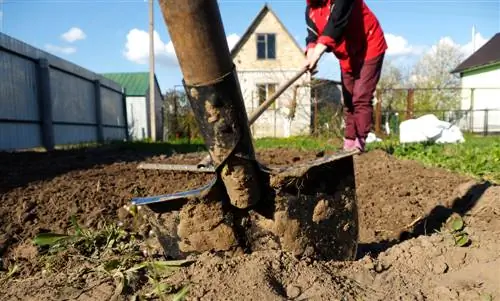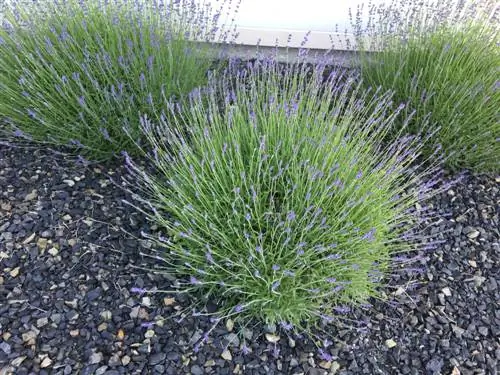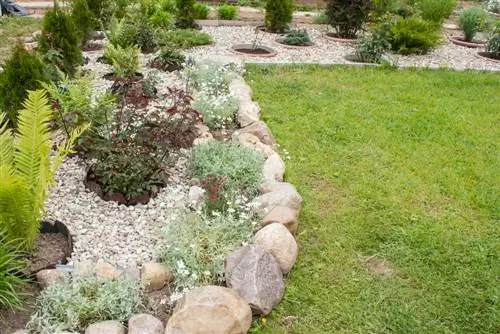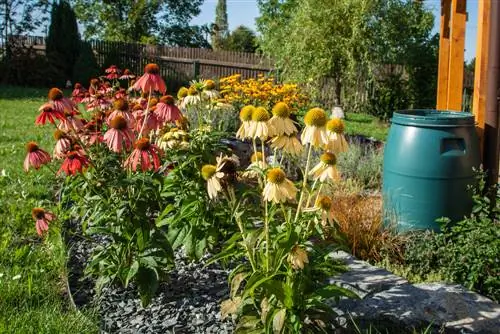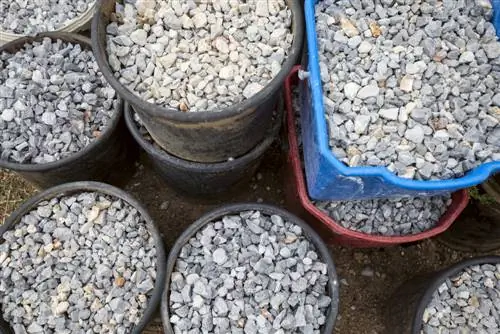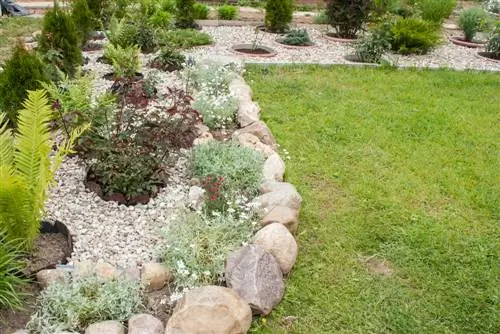- Author admin [email protected].
- Public 2023-12-16 16:46.
- Last modified 2025-06-01 06:02.
The correct construction of a gravel bed depends largely on excavating the area to the correct depth. The perfect depth depends on the local site conditions and the intended plant species. This guide will familiarize you with all the requirements that determine the ideal excavation depth for your gravel bed.
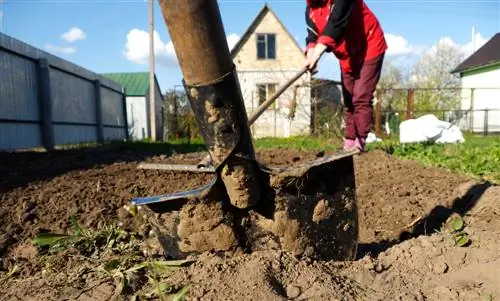
How deep should the gravel bed be?
The ideal excavation depth for a gravel bed depends on the quality of the soil: For sandy-dry, well-drained soil it is 20-25 cm, for fresh-moist garden soil it is 30-35 cm and for moist soil with a risk of waterlogging 40 -45cm. For trees with large root balls, the depth should be adjusted accordingly.
Soil quality determines the excavation depth - you should pay attention to this
Contrary to popular belief, creative bed design with gravel is not limited to sunny, dry locations. The easy-care bed variant with a gravel ground cover is actually suitable for almost all soil qualities. The rule of thumb for the excavation depth is: the wetter the ground, the deeper you will dig. The most important data at a glance:
- Sandy-dry, well-drained soil: 20 to 25 cm deep
- Fresh, moist garden soil: 30 to 35 cm deep
- Damp soil with risk of waterlogging: 40 to 45 cm deep
If you have decided on a border made of edging stones, dig the ground 30 to 35 cm deep along the marked route. At this depth there is enough space for a stabilizing strip foundation made of gravel and concrete.
Include root ball height in the calculation
The recommended excavation depths apply to a gravel bed in which perennials and flowers stand out. However, if your planting plan contains trees with large root balls, you should dig deeper. To ensure that a garden bonsai such as Korean fir (Abies koreana) or mountain pine (Pinus mugo) takes root in the Japanese gravel bed, measure the height of the root ball and adjust the depth of the case accordingly.
Slight slope prevents waterlogging
If the gravel bed is in a moist region of the garden, adding gravel to the topsoil is not enough. If you also dig the ground with a minimal gradient, excess water can drain away easily. With the help of the gravel layer you can visually compensate for the gradient.
Tip
You can use boulders to create impressive accents in the gravel bed and create a third dimension in the appearance. To perfectly showcase the stone eye-catcher, dig the soil at the site so deep that you can sink a third of the monolith.

